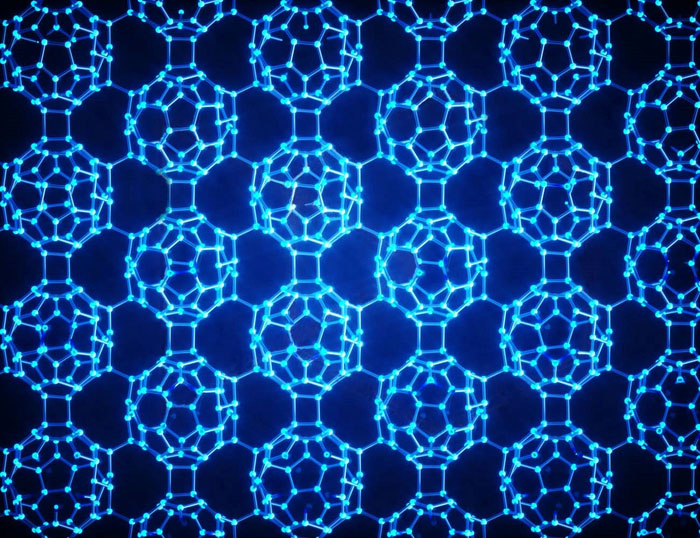| Jun 15, 2022 |
|
(Nanowerk News) Synthetic carbon allotropes are fascinating for their outstanding properties and potential applications. Scientists have devoted decades to synthesizing new types of carbon materials. However, a two-dimensional fullerene, which possesses unique structure, has not been successfully synthesized until now.
|
|
Recently, a research group led by Prof. ZHENG Jian from the Institute of Chemistry of the Chinese Academy of Sciences (ICCAS) developed a new interlayer bonding cleavage strategy to prepare a two-dimensional monolayer polymeric fullerene (Nature, “Synthesis of a monolayer fullerene network”).
|
 |
| The structure of monolayer polymeric C60. (Image: Ella Maru Studio)
|
|
The researchers prepared magnesium intercalated C60 bulk crystals as the precursor to the exfoliation reaction. They then utilized a ligand-assisted cation exchange strategy to cleave the interlayer bonds into bulk crystals, which led to the bulk crystals being exfoliated into monolayer nanosheets.
|
|
The structure of monolayer polymeric C60 was explored by single crystal X-ray diffraction and scanning transmission electron microscopy (STEM). In this monolayer polymeric C60, cluster cages of C60 are covalently bonded with each other in a plane, forming a regular topology that is distinct from that of conventional 2D materials.
|
|
Furthermore, the monolayer polymeric C60 exhibits an interesting in-plane anisotropic property and a moderate bandgap of 1.6 eV, which makes it a potential candidate for use in electronic devices.
|
|
“The work is the first to synthesize a monolayer polymeric fullerene. It is of great significance, as it adds a new member to the carbon material family,” ZHENG said. “This work has opened up a new research field in two-dimensional carbon material areas and the synthesis strategy could provide a unique perspective in exploring new carbon material.”
|


